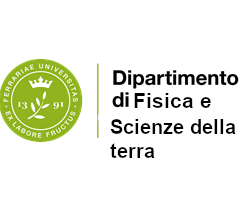Seminario

- https://new.fst.unife.it/it/eventi/seminario-8
- Seminario
- 2025-05-07T15:00:00+02:00
- 2025-05-07T16:00:00+02:00
- Searching for Light Dark Matter with the NA64/POKER experiment at CERN Speaker: Andrea Celentano (Istituto Nazionale di Fisica Nucleare)
-
Quando
il 07/05/2025 dalle 15:00 alle 16:00
Aggiungi l'evento al calendario
Aggiungi l'evento a Google Calendar
Il giorno 7 maggio alle ore 15 presso la stanza 412, Andrea Celentano (Istituto Nazionale di Fisica Nucleare) terra' un seminario dal titolo
Searching for Light Dark Matter with the NA64/POKER experiment at CERN
Abstract
One of the most compelling arguments motivating the search for physics beyond the Standard Model (SM) is the need to explain the nature of Dark Matter (DM). Despite an extensive experimental program that combined direct, indirect, and detection at colliders, to date, no conclusive results about DM particle nature have been determined. Among the DM theories, DM particles in the mass range 1 MeV - 1000 MeV (also called Light Dark Matter or LDM) represent a theoretically wellgrounded option if a new DM-SM interaction mechanism is introduced. A simple model introduces a new vector boson, the dark photon (A'), kinetically mixed with the SM photon and coupled to DM. The A' can be produced in interactions of charged particles with matter and decay into LDM pairs.
The NA64 experiment at CERN uses a 100 GeV electron beam hitting an active target (ECAL) to search for missing-energy events. With 10×10¹² electrons on target, no events with missing energy above 50 GeV were observed, allowing NA64 to set leading limits on LDM scenarios.
A positron-based missing-energy search has also been proposed in the POKER (Positron Resonant Annihilation into Dark Matter) project. Using a positron beam enhances LDM production through electron-positron annihilation and provides a clean signal dependent only on the A' mass. Successful tests at 100 GeV and 70 GeV have validated this technique, paving the way for a high-statistics positron program after LS3.
